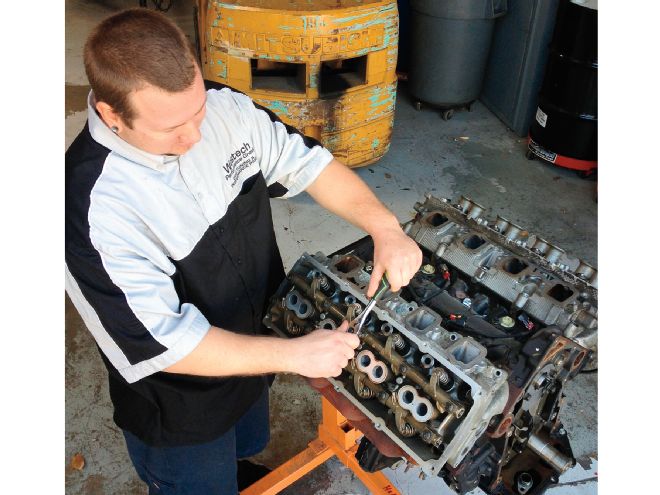
The modern Hemi is an impressive piece of engineering. One need only look at the previous generation 5.9 Magnum engine as a comparison to see that Dodge made a massive evolutionary step forward when they introduced the Hemi. Who among us didn't like the fact that the Hemi offered 100 extra horsepower over the outgoing Magnum 360? A big factor is that the Hemi was blessed with (relatively) massive head-flow. It seems that the engineers stumbled across the notion that you can get big power by combining mild cam-timing with high-flow cylinder heads. Thanks to the impressive cylinder heads, the Hemi has a reputation for responding very well to cam changes, but what happens after the cam swap? The question we were looking to answer is this; given the impressive head flow in stock configuration, is there power to be had from further improving head flow? In short, what kind of power gains are available from ported Hemi heads?
Testing ported Hemi heads is easy enough, but we decided to go one better. The problem (or limitation) of testing a set of ported heads against a set of stock (as cast) heads, is that the results are combination dependent. If someone were to ask if ported heads are worthwhile, and test them on our mild 5.7, their opinion might be very different than had they run the test on our 6.1 stroker. More than likely, your Hemi engine combination is holding back the power potential of your heads, rather than the other way around. Is it possible for ported heads to offer just 10-12 horsepower on a mild 5.7, and over 40 horsepower on a larger, more powerful engine? The only way to illustrate this point was to perform back-to-back head tests on two different Hemi engines, starting with a mild, 2004 5.7, equipped with little more than a Comp Cam upgrade.
Test 1: Stock vs. TEA-Ported 5.7 Heads on a Mild 5.7
Test Number One involved a 2004 5.7 Hemi, pulled from the engine bay of a Dodge Ram 1500 pickup. The only modification to the Hemi was the addition of a mild Comp camshaft. The 260H-13 (PN: 112-500-11) cam offered a .522/.525-inch lift split, a 208/212 duration split at .050 inch, and a 113-degree lobe separation angle. There were a few smaller cams available in the Tri-Power Xtreme series, but this 260H-13 camshaft was the smallest offering in Comp's XFI series. To put these numbers into perspective, the stock Hemi cam offers just .470-inch lift, 196 degrees of duration, and shared the 113-degree LSA. The engine was run with SRT8 exhaust manifolds, and tuned with the Fast XFI/XIM management system. Equipped with the stock 5.7 heads, the cam-only upgraded 5.7 produced peak numbers of 401 horsepower at 5,600 rpm, and 427 lb-ft of torque at 4,500 rpm. Torque production exceeded 400 lb-ft from 3,600 rpm to 5,200 rpm. Now it was time for the ported heads.
Dodge now offers four different Hemi heads, the early 5.7 (like the ones we tested), the 6.1, the later 5.7 Eagle, and the 6.4 Apache heads. The early 5.7 heads we tested, offered the lowest stock flow-rates of the bunch, topping out at 269 cfm at .700-inch lift. All of the later heads offer significantly more flow in as-cast form, with each easily exceeding 300 cfm. Flow numbers for the 6.4 Apache heads are said to reach 340 cfm, a big number even for ported 5.7 heads, as our ported early castings from Total Engine Airflow (TEA) checked in at 329 cfm. The improvement in airflow offered by the porting from TEA was significant, as the ported heads flow enough to support over 650 horsepower. The question now was; would the mild engine be able to take advantage of the extra head flow when it was making only 400 horsepower? The answer was not really, as the stock heads were already sufficient to support the current power level. The ported heads improved the power output slightly, to 413 horsepower at 5,700 rpm, and 439 lb-ft of torque at 4,600 rpm, but it was another case of the mild combination holding the heads back. The results would change in test two.
TEST 1 POWER NUMBERS Hemi Head Test—2004 5.7L Hemi (260 Comp Cam) Head RPM Stock HP/TQ Ported HP/TQ 2,500 177/372 180/378 3,000 212/371 217/380 3,500 266/399 272/408 4,000 321/421 330/433 4,500 365/427 375/438 5,000 399/419 407/428 5,500 401/383 412/393 6,000 400/350 412/361 6,400 372/305 384/315 PEAKS Stock Heads—401 hp at 5,600 rpm, 427 lb-ft at 4,500 rpm Ported heads—413 hp at 5,700 rpm, 439 lb-ft at 4,600 rpm
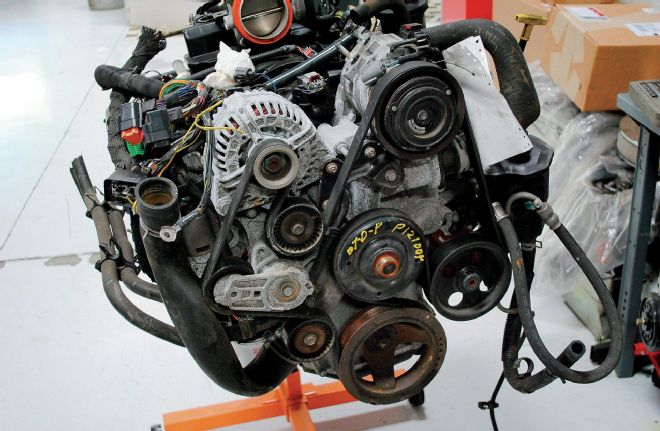
1. Test mule number one came fresh from a local wrecking yard. The 5.7 was pulled from a 2004 Dodge Ram 1500. The motor had logged 135,000, but was still in remarkable shape internally.
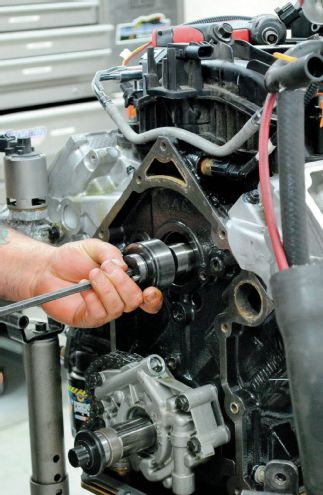
2. The only internal upgrade to the truck 5.7 was to replace the truck cam with a mild Comp grind. The 260H-13 offered a .522/.525-inch lift split, a 208/212 duration split at .050-inch, and a 113-degree lobe separation angle.
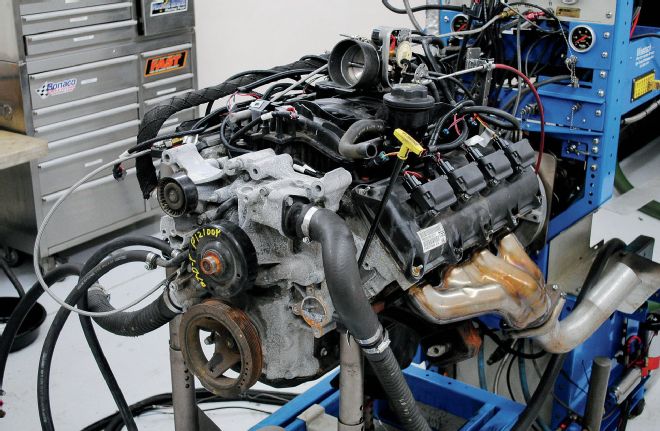
3. Run with the mild Comp cam, stock 5.7 heads and truck intake, the 5.7 produced 401 horsepower at 5,600 rpm, and 427 lb-ft of torque at 4,500 rpm.
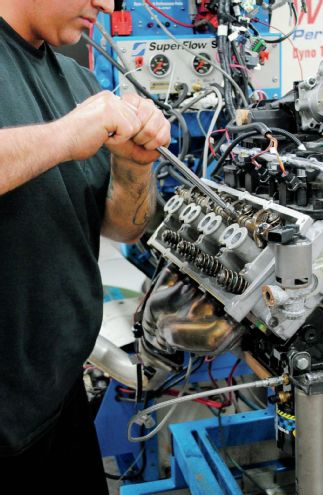
4. The stock heads were removed to make way for a set of ported 5.7 heads from Total Engine Airflow. The ported heads from TEA increased the intake flow from 269 cfm to 329 cfm, a gain of 60 cfm at .700 lift. Gains in exhaust flow were equally impressive, as the porting increase flow from 186 cfm to 249 cfm.
Test 2: Stock vs. TEA-Ported 5.7 heads on 6.1 Stroker
Test engine number two was considerably more powerful than the mild 5.7 used in test one. This engine started life as a 5.7, but was upgraded using a Scat stroker crankshaft and rods, teamed with a set of forged pistons from Probe Racing. The combination of the 3.795-inch stroker crankshaft and 3.937-inch (.020-inch over) bore, resulted in a final displacement of just under 370 inches. This combination nearly matched the displacement of the larger 6.1, but with a different bore/stroke combination (the 6.1 combined the smaller 3.578-inch stroke with a larger 4.055 bore). The 5.7 stroker was equipped with a custom Comp hydraulic-roller cam that offered .589-inch lift (both intake and exhaust), a dual-pattern, 239/247-degree duration split, and 114-degree LSA. This test was run with the same stock and ported heads used on the smaller 5.7 in test one. Equipped with the stock (as-cast) heads, the stroker produced 486 horsepower at 6,500 rpm, and 426 lb-ft of torque at 5,200 rpm. After installation of the ported heads, the peak numbers jumped to 527 horsepower at 6,500 rpm, and 451 lb-ft of torque at 5,500 rpm. On this stroker, the ported heads were worth 41horsepower. Had we run this same test on a 392, 426 or 440-inch Hemi stroker with even wilder cam timing, the power gains would be even more substantial.
TEST 2 POWER NUMBERS Hemi Head Test—Modified 5.7 Hemi Stroker Head RPM Stock HP/TQ Ported HP/TQ 3,000 212/371 210/368 3,500 241/362 245/368 4,000 298/391 309/406 4,500 339/396 364/425 5,000 404/424 429/450 5,500 439/419 473/451 6,000 461/404 498/436 6,500 486/393 527/419 PEAKS Stock cam—486 hp at 6,500 rpm, 426 lb-ft at 5,200 rpm Com Cam—527 hp at 6,500 rpm, 451 lb-ft at 5,500 rpm
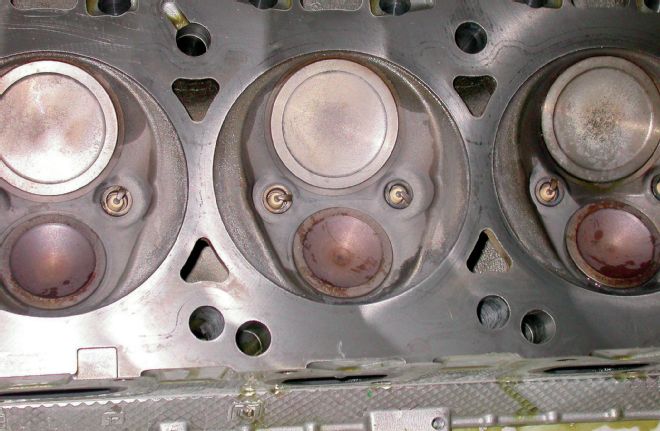
5. The stock (early) 5.7 Hemi heads featured 85-cc combustion chambers. The later 5.7, 6.1 and 6.4 heads all feature smaller chambers than this early 5.7.
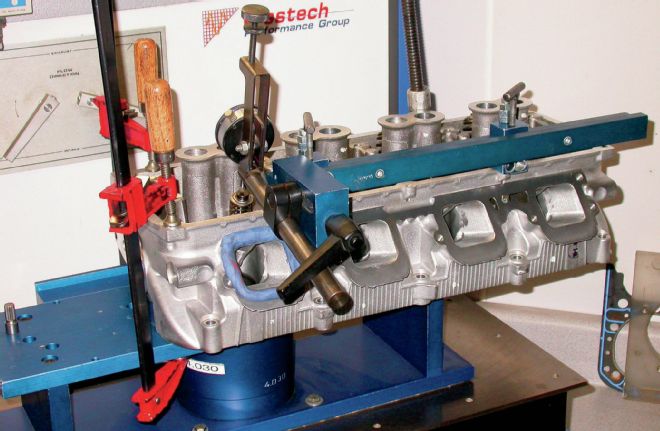
6. Rather than rely on numbers generated on two different benches, we flow tested both the stock and TEA-ported heads on the flow bench at Westech Performance.
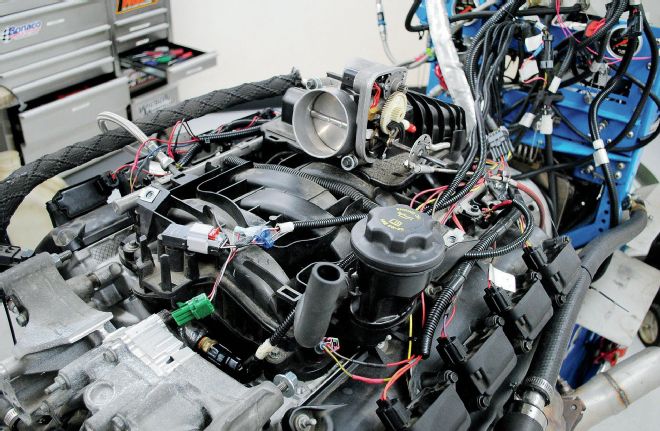
7. Run once again with the truck intake and TEA-ported heads, the 5.7 produced 413 horsepower at 5,700 rpm, and 439 lb-ft of torque at 4,600 rpm. The significant gains in airflow did not translate into additional power since the stock heads were more than able to supply the flow needs of the mild combination.
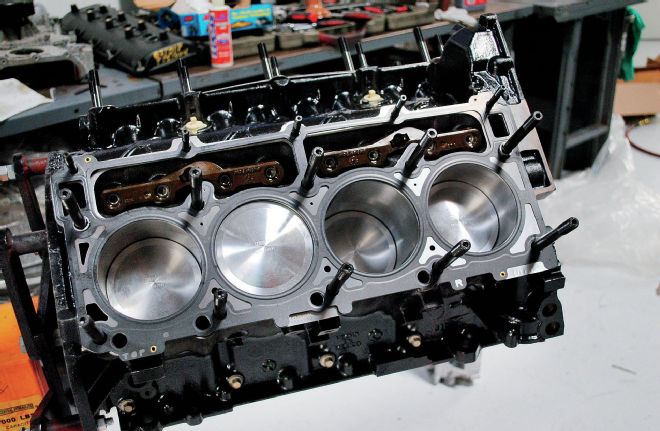
8. Test engine number two started out life as a 5.7 but was upgraded to 6.1 status with a Scat stroker crankshaft, matching connecting rods, and a set of forged pistons from Probe Racing. Note also the factory MLS head gaskets and ARP head studs.
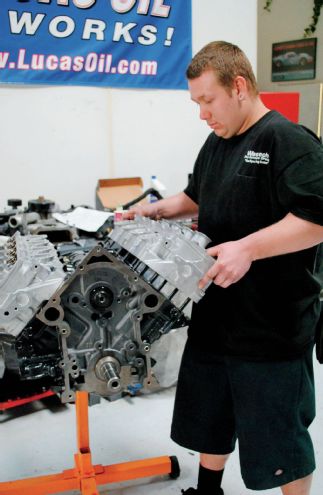
9. The stroker was first assembled using the stock (as-cast) heads before performing the head swap on the dyno.
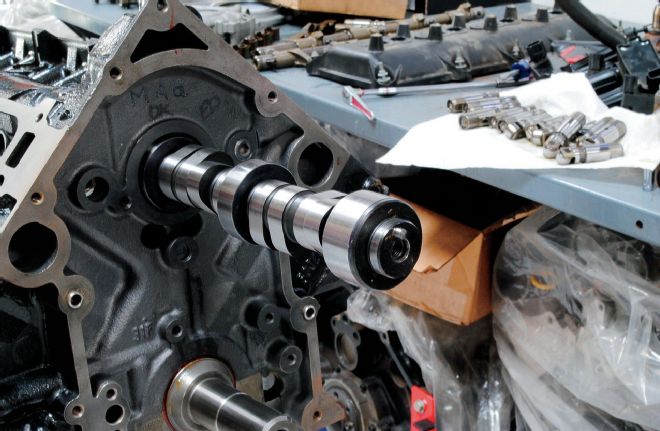
10. This stroker employed a much more aggressive cam profile than the mild 5.7. The hydraulic-roller, Comp grind offered .589-inch lift, a 239/247-degree duration split (at .050) and 114-degree LSA.
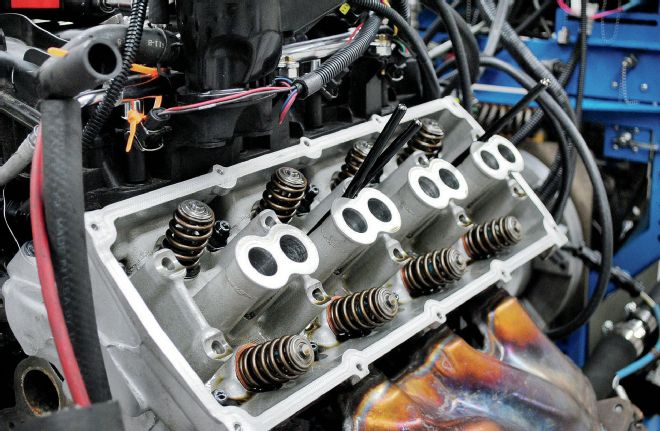
11. Equipped with the stock heads, the stroker produced 486 horsepower at 6,500 rpm, and 426 lb-ft of torque at 5,200 rpm. Obviously this combination was considerably more powerful than the mild 5.7, but would it respond to the ported heads? Off came the stockers to make room for the TEA heads.
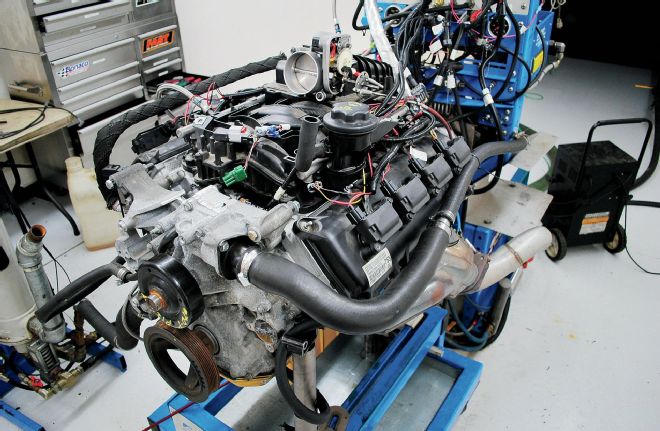
12. Run with the ported heads, the stroker produced 527 horsepower at 6,500 rpm, and 451 lb-ft of torque at 5,500 rpm, a gain of 41 horsepower, and 25 lb-ft of torque. These gains were impressive, given this engine was still displacing just 6.1 liters. The gains offered by ported heads would be even greater on larger, more powerful configurations.